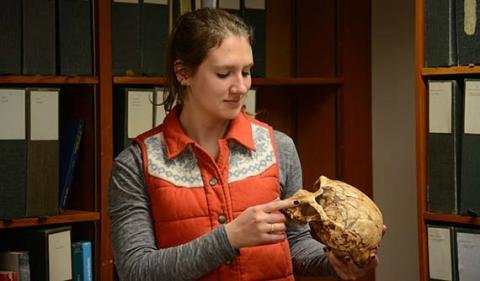
I found the following quote from Bob Seidensticker to be an excellent explanation of Evangelical presuppositional apologetics. If you have ever had a discussion with someone who is a presuppositionalist, you know how frustrating such discussions can be. This quote doesn’t provide an answer to presuppositionalism as much as it shows how presuppositionalists think. You will likely never win an argument about the existence of God with a presuppositionalist since they reject an evidentiary approach when it comes to the existence of God and supernatural nature of the Bible. It does, however, help to know HOW such people think. This will keep you from wasting hours talking with someone about God or the Bible, only to have them default to “the Bible says.” End of discussion.
Christian use of “If”
Christians can also make daring use of this word, but it’s a different kind of daring. Here are some examples where they conjure up the supernatural with an If.
If God exists, it makes not only a tremendous difference for mankind in general, but it could make a life-changing difference for you as well. —William Lane Craig
If Jesus was literally God incarnate, and if it is by his death alone that men can be saved, and by their response to him alone that they can appropriate that salvation, then the only doorway to eternal life is Christian faith. —John Hick
If Jesus rose from the grave, that’s the most important event in history. It proves Jesus is who He said He was, that Christianity is true, that you will be resurrected and brought before God to account for your crimes against Him. —Alan Shlemon
If God had the power necessary to create everything from nothing [that is, create the universe], he could probably pull off the miracles described in the New Testament. —J. Warner Wallace
(Sometimes the if is assumed. For example, the atheist raises the Problem of Evil, and the apologist replies, “[If we first assume God,] Who are you to question God?”)
Perhaps you can see the problem. Yes, if that amazing and unevidenced claim about God or Jesus is true, then your conclusion holds, but why would you think it would? It’s like saying, “If Santa exists, I’ll get lots of presents” or “If friendly aliens are among us, they’ll give us lots of cool technology” or “If I can speak to the dead, I will gain great wisdom.” The conclusion might logically follow, but why accept the ridiculous if premise? No reason is given.
In Christians’ Alice-in-Wonderland logic, the premise is the conclusion. The four quoted examples above simplify to “If God exists, then God exists.” The Christian apologist could cut to the chase, declare that God or Jesus exists, claim victory over the atheist, and be done with it, but then of course they admit the sleight of hand. The second half of the “If God exists . . .” statement is window dressing compared to the fundamental claim that God exists. The conclusion was buried in the premise all along.
This is the Hypothetical God Fallacy. It’s a fallacy because no one interested in the truth starts with a conclusion (God exists) and then arranges the facts to support that conclusion. That’s backwards; it’s circular reasoning. Rather, the truth seeker starts with the facts and then follows them to their conclusion. Christians don’t get an exemption, and they must do it the hard way, like any scientist or historian, showing the evidence that leads unavoidably to the conclusion.
— Bob Seidensticker, The Cross Examined, A Popular Blunder: Bringing Something Into Existence with an “If”, March 11, 2019








